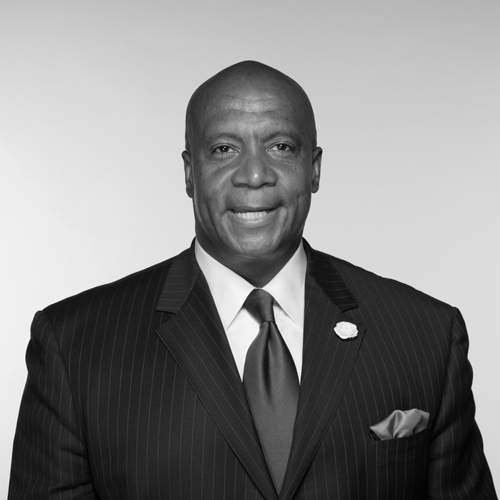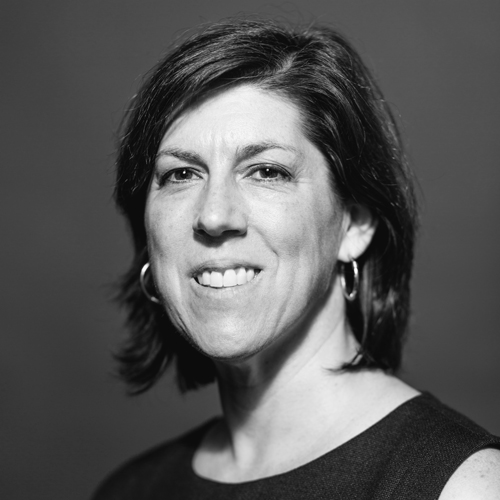Modern Counsel: After graduating from law school, you joined Baker and Daniels (now Faegre Baker Daniels) in Fort Wayne, Indiana. Was that an easy transition?
David Royster: Yes. Even though I grew up in North Carolina, I was going to law school in St. Louis, and I’d been a summer associate at the firm, so it already felt like home.
MC: The first case you worked on was for Zimmer?
DR: That’s right. I joined the firm in September 1997 and immediately got pulled into a patent infringement case. After 18 months, we secured a nice result for Zimmer. We continued to get work from them, mostly product liability cases and commercial litigation. About 50 percent of my time at Baker and Daniels was spent working on matters for Zimmer.
MC: Then in January 2000, you decided to join Zimmer full-time?
DR: I wasn’t looking, but I got a call from Zimmer’s general counsel. I’d gotten to know him and enjoyed working with the team. Someone in his department was retiring, and he wondered if I’d be interested in joining them. It was too good an opportunity to pass up, and I’ve been here ever since.
MC: What are some of the benefits of working in-house versus working for the same company as outside counsel?
DR: Companies that make products that people use every day—and, in the case of Zimmer Biomet, that restore people’s mobility—are the engines behind our progress as a society. I like being part of that. The people I work with are innovative and focused, and it’s an honor to help them deal with the legal issues of the marketplace. I enjoy learning what it takes to drive business goals and initiatives—and how difficult and complicated it can be. There are so many stakeholders—customers, patients, stockholders, employees—who are affected by the decisions and products that are made here. I’m impressed by the enormity of what business managers do and all the different skills that are called upon.
MC: How have your responsibilities changed during the 15 years you’ve been with the company?
DR: When I started, we had just four or five in-house lawyers. We all did whatever needed to be done, which included a lot of transactional work, contracts, business development deals, etc. The year after I joined, we spun off from Bristol-Myers Squibb and became a publicly traded, independent company. In 2003, we acquired Centerpulse, doubling our annual sales to $3 billion. Since I’d been with the company for a few years, I had a good foothold, and the legal department grew underneath me. I took over litigation, including for the new dental and spine divisions we acquired as part of the Centerpulse deal. Our newly merged global legal department has approximately 35 attorneys.
MC: The company’s latest move was its $13 billion merger with Biomet (which closed in June 2015). What was that like?
DR: From the time the deal was first announced, its closing took 14 months. There were very few hiccups along the way. Both companies are based in Warsaw, Indiana—known as the “orthopedic capital of the world”—so a lot of us already knew each other, and we had similar
corporate structures.
MC: How has the legal department changed since the merger?
DR: Zimmer and Biomet had about the same number of in-house attorneys before the merger. There were some redundancies and resulting cuts, which happened in every department. The total number in my group hasn’t changed, though there has been some reshuffling. I oversee seven attorneys now: three in litigation, one each in the dental and spine divisions, and two in the hip and knee/reconstructive division.
MC: How did you maintain morale when people knew job cuts were coming?
DR: A consulting firm helped us with the integration. They gave us some talking points, but when push came to shove, I put those aside because they didn’t feel authentic. People are people, not just numbers on spreadsheets. I looked everyone in the eye and talked to them one-on-one. I didn’t make promises I couldn’t keep. I told them that none of us was immune; no one knew who was going to be let go. So there was uncertainty all around. I couldn’t give any assurances, but I told them that the people making these decisions were being very careful and taking them into account.
MC: What other principles underlie your leadership style, and where did you learn them?
DR: Coach Krzyzewski is a big inspiration. I know he has a reputation for being difficult to deal with, but he has such clear command of his program. He makes decisions and moves on, and his players and coaching staff would walk through walls for him. The Duke corporate education department, which provides business consulting services, has even developed a program that uses some of his methods as a teaching tool. Two of the quotes attributed to him that I like a lot are: “Effective teamwork begins and ends with communication,” and “Making shots counts, but not as much as the people who make them.”
MC: Has Zimmer provided training for its managers?
DR: Yes. The programs I found most helpful were taught by Senn Delaney, a culture-shaping firm. One module was called “shadow of the leader,” which is based on the theory that people in positions of leadership influence the behavior and actions of others, thus casting a shadow across the organization. When I come into the building in the morning, if I’m grouchy, the people on my team are on edge; if I’m in a good mood, that can reflect positively on everyone else’s day. I used to think I could just close my door if I was having a bad day, but that’s not how it works. Another of their modules is called the “mood elevator.” It teaches you to literally think of your mood as an elevator. When you’re on the higher floors, you’re happy, more productive, and collegial. When you’re on the lower floors, you tend to be cynical, doubtful, and depressed, which drags people down. It was another constructive way to show us how our moods affect those around us.
MC: What is your best leadership advice?
DR: I’ve learned that leadership is much more important than managing. You need to act like a leader and lead by example. You need to let people know that you’re there if they get stuck; that you trust them to do their job; that you want to know what’s going on, but you’re not going to micromanage them; and that, above all, they’re people whose lives and goals you truly care about—both on and off the job.

